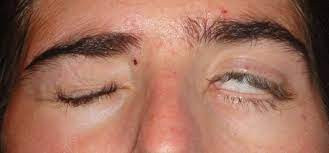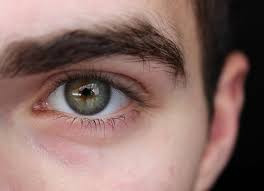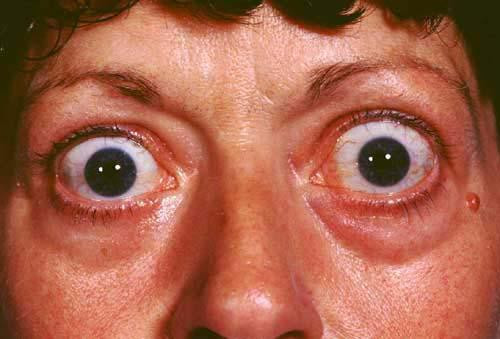Definition
Lagophthalmos is characterized by the inability to fully close the eyelids. When this occurs exclusively during sleep, it is termed nocturnal lagophthalmos. The action of blinking and closing the eyelids is crucial for maintaining tear film and corneal health. Inadequate blinking or failure to fully close the eyes can result in corneal exposure, leading to dryness and irritation. Such exposure can cause corneal injury and infections (keratitis).
Prompt detection and treatment of lagophthalmos are essential to prevent complications. Treatment options vary based on the underlying cause and severity of the condition.
Causes
Lagophthalmos can be attributed to various factors, including:
1. Nerve Paralysis
Facial nerve paralysis is a prominent cause of lagophthalmos, associated with several conditions:
- Infections: Conditions such as otitis (ear infection), viral infections (herpes zoster, influenza, polio), and bacterial infections (tuberculosis, syphilis, leprosy).
- Injuries: Facial injuries, birth injuries, and head fractures.
- Tumors: Neoplasms involving facial nerves, such as sarcomas (bone tumors), leukemia (blood cancer), and meningiomas (brain lining tumors).
- Metabolic diseases: Diabetes and hypertension.
- Idiopathic conditions: Bell's palsy, Guillain-Barre syndrome, and multiple sclerosis.
2. Eyelid Damage
Scarring of the eyelids can result in lagophthalmos. The eyelids comprise 7 layers, and damage to any layer can impair eyelid closure. Causes include:
- Skin degeneration, resulting from prolonged sun exposure.
- Chemical burns.
- Pemphigoid, an autoimmune condition causing blistering rashes.
- Stevens-Johnson syndrome, a severe skin condition leading to rash formation.
3. Nocturnal Lagophthalmos
This form of lagophthalmos occurs during sleep, leading to dry eyes and corneal exposure, often without patient awareness.
4. Other diseases
Blinking disorders with lagophthalmos are commonly observed in Parkinson's disease.
Risk factor
Certain conditions increase the risk of developing lagophthalmos, including:
- Traumatic injuries from sharp or blunt objects.
- Autoimmune disorders such as Guillain-Barre syndrome.
- Certain tumors, including acoustic neuromas that develop in connecting neurons of the ears and brain
- Eyelid injuries from burns or conditions like Stevens-Johnson syndrome.
- History of eyelid surgeries.
Symptoms
The hallmark symptom of lagophthalmos is difficulty in closing the eyes, accompanied by:
- The sensation of a foreign object in the eye.
- Eye redness and irritation, sometimes can be painful.
- Burning sensation in the eyes.
- Excessive tearing.
- Eye infections.
- Corneal wounds.
- Eye dryness.
Diagnosis
The diagnosis of lagophthalmos is established through a thorough medical history and physical examination. The medical history is crucial for identifying potential causes of lagophthalmos, such as prior surgeries or injuries to the eyelids, face, and head. A history of infections, especially shingles (herpes zoster), should also be considered. A comprehensive medical history aids in pinpointing the etiology of lagophthalmos.
Physical examination
The severity extent of lagophthalmos can be evaluated by instructing the patient to close their eyes while the doctor observes for any gaps between the upper and lower eyelids. If the gap is present, the gap's distance is measured, and the condition of the cornea is assessed. A slit-lamp examination can be utilized to detect corneal damage, often with the aid of fluorescein staining. Additionally, the functionality of cranial nerves, particularly those governing ocular muscle movements, is examined.
Other examinations
Laboratory and radiological tests can further elucidate the diagnosis or underlying causes of lagophthalmos. For instance, laboratory assessments might be conducted for thyroid hormone imbalances and radiological imaging such as CT scans can be employed for patients with suspected brain tumors.
Management
Treatments for lagophthalmos can include pharmacological and surgical approaches. Medical treatment aims to alleviate symptoms, such as using artificial tears to prevent dry eyes, which are readily available over-the-counter. For nocturnal lagophthalmos, protective measures like eye patches and moisturizers can be used. Surgical options are also available, including:
- Tarsorrhaphy: This procedure involves partially sewing the eyelids together to reduce the palpebral fissure, offering quick recovery and effective corneal protection. In most cases, this method is considered good for protecting the cornea.
- Gold Weight Implantation: This method involves implanting a gold weight in the upper eyelid, particularly effective for lagophthalmos due to nerve paralysis. Implanted gold is ideal because it is usually invisible under the thin eyelid skin.
Complications
If untreated, lagophthalmos can lead to frequent eye injuries due to insufficient eye protection. Persistent exposure to the opened eyes can cause corneal irritation and infections (keratitis), and may result in corneal ulcers.
Surgical treatment, such as tarsorrhaphy, may lead to complications including scarring. Adherence to post-operative care is crucial to avoid further issues.
Prevention
Generally, there are no specific preventive measures for lagophthalmos. Prevention efforts are mainly directed towards avoiding complications. Utilizing artificial tears or eye protection can help prevent dry eyes and corneal damage.
When to see a doctor?
The prognosis of lagophthalmos varies based on the underlying cause. Immediate medical consultation is advised if symptoms such as difficulty blinking or closing the eyes are observed. Prompt treatment can prevent progression and mitigate ocular damage. A healthcare provider will evaluate to determine the appropriate treatment strategy for managing lagophthalmos.
Looking for more information about other diseases? Click here!
- dr Nadia Opmalina
-
American International Medical University. Lagophthalmos : Symptoms, Causes, Diagnosis and Management (2018). Available from : Lagophthalmos : Symptoms, Causes, Diagnosis and Management - (aimu.us)
-
Ian Franks. Lagophthalmos (2018). Available from : Lagophthalmos: Causes, Symptoms, Treatment, and More (healthline.com)
-
Lanxing Fu. Lagophthalmos (2021). Available from : Lagophthalmos - PubMed (nih.gov)
-
Min Ji Kim. Treatment for ophthalmic paralysis: functional and aesthetic optimization (2019). Available from : Treatment for ophthalmic paralysis: functional and aesthetic optimization - PubMed (nih.gov)












